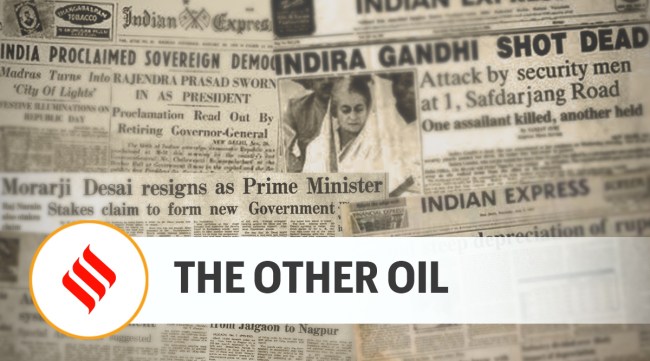Opinion The other oil
The Ukraine war will force a spike in edible oil prices. India must incentivise farmers to grow more oil seeds
 The war in Ukraine, in a sense, exposes India’s vulnerability in edible oils similar to what the 1991 Gulf War did vis-à-vis petroleum.
The war in Ukraine, in a sense, exposes India’s vulnerability in edible oils similar to what the 1991 Gulf War did vis-à-vis petroleum. While economic commentary post the Russian invasion of Ukraine has largely focused on oil — Brent crude topping $100/barrel and the likelihood of petrol, diesel and LPG cylinder price increasing once polling in Uttar Pradesh concludes on March 7 — there is also the impact on the “other oil”. Sunflower is India’s fourth most consumed cooking oil, after palm, soyabean and mustard. The country imports about 98 per cent of its sunflower oil requirement — almost 93 per cent of that coming from Ukraine and Russia. Moreover, it’s not only sunflower. India also imports the bulk of its soyabean oil from Argentina and Brazil and palm oil from Indonesia and Malaysia. The ongoing conflict and disruption in shipments from Black Sea ports is rubbing off on these oils too, compounded by dry weather in South America and Indonesia imposing a 20 per cent domestic market sale obligation on its palm oil exporters. Crude palm futures prices in Malaysia scaled record highs of 7,000-plus ringgit per tonne last week.
All these matter for India, given that only 8.5-9 million tonnes of its annual 22-23 million tonnes edible oils consumption demand is met through domestic production. The country’s vegetable oil import bill totalled $11.09 billion in 2020-21 and $14.02 billion in April-December 2021, which may well cross $17-18 billion for the whole fiscal. The war in Ukraine, in a sense, exposes India’s vulnerability in edible oils similar to what the 1991 Gulf War did vis-à-vis petroleum. Russia is, incidentally, also the world’s top wheat exporter, with Ukraine at third position both in wheat (behind Australia) and maize (after the US and Argentina). But for India, the worry is more on the edible oil and fertilisers front: Russia and its neighbouring ally Belarus are the biggest producers of potash after Canada, while the curtailment of natural gas supplies from Russia will certainly push up ammonia and urea prices.
Every crisis, however, opens up opportunities. Mustard is now trading in Rajasthan’s mandis at Rs 6,600-6,900 per quintal, way above the official minimum support price (MSP) of Rs 5,050. That’s good news for farmers, just days ahead of the harvesting season. The Narendra Modi government should declare higher MSPs — preferably, as a one-time bonus — for groundnut, soyabean, sesamum and sunflower to incentivise farmers to grow these oilseeds in the ensuing kharif season. There is a need for focused campaigns, especially in states such as Punjab, Haryana, Telangana and Andhra Pradesh, to wean farmers away from paddy to oilseeds, pulses and cotton. The best way to do it is through guaranteed MSP procurement — which may not be required if open market prices stay high.






